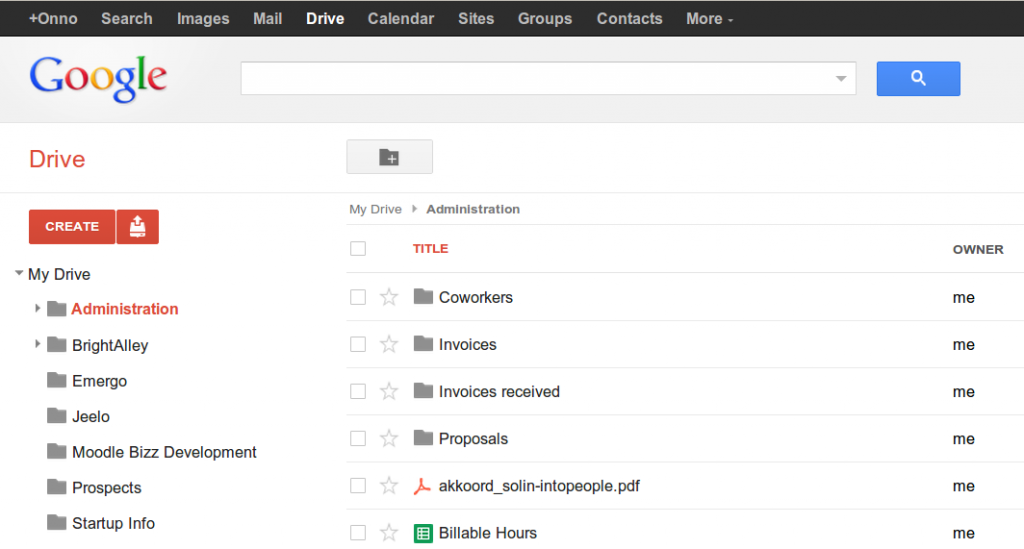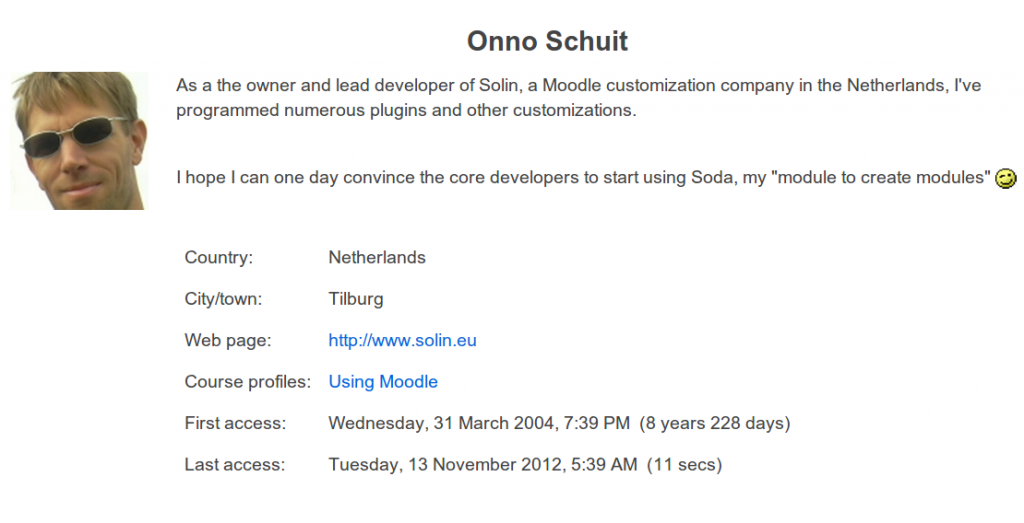e-Learning for Trainers and Coaches
When I was at a lunch party last month, I had a conversation with a trainer. He asked me what I do for a living and I said: “Well, something very related to what you do, I develop e-learning solutions for trainers and coaches”.
And I was shocked to hear him respond: “No, we don’t do e-learning. That’s for transferring knowledge, and we’re focused on transferring skills.”
In his mind, e-learning was something for educational institutions, having to do with studying. But in reality e-learning is so much broader than that. Many large training companies already know this, and many hrm departments also use e-learning on a daily basis. We know this because these companies are customers using our e-learning services.
So in this post I want to show you what you can do with e-learning to move part of your daily work as a trainer online for fun and for profit. And by profit I mean: recurring billing as an additional source of revenue.
Stop Hauling Around Those Binders, Books and Forms
Do you carry around all your reference materials, sheets and forms to each of your training sessions? Each piece of paper multiplied by the number of participants?
Stop doing that. Just put your intake forms, smile sheets and evaluation forms on your website. You’ve got a website, right? If you’re worried that somebody might steal it, just put it on Google Drive (used to be called Google Docs). If you don’t have one already, create a Google account (if you’re using gmail you’ve already got one) and log in. In the top menu bar, you’ll see the option Drive. Go there and upload all your documents.
Now, Google Drive lets you share your documents with the people you select. As an added bonus, Google Drive also lets you edit the documents online so you can keep them fresh without having to copy, redistribute or even upload them again. Just remember to select the “read only” option if you’re sharing the documents with your trainees.
And by the way, sharing is very easy in Google Drive: just hit the share button and add email addresses. The only downside is that people need a Google account to log in to see your training materials (but not right away, you can send the invitation for sharing to their regular email address). The upside is that you can share all materials before your first training session actually starts!
Also, think of all the time and costs you’ll save on copying, binding, and distributing your training reference materials.
The Real Benefits of e-Learning
A good e-learning platform facilitates the distribution of reference materials, intake forms and smile sheets even better than the Google Drive solution we talked about above. But e-Learning really shines when employed for improving transfer of training.
The transfer of training problem poses the following question, originally formulated on businessperform.com:
Why is it that such a small proportion of training ends up being used back in the workplace?
You can use an e-learning platform as a transfer toolkit to encourage trainees to actually use their newly acquired skills in the workplace. e-Learning platforms are also known as learning management systems (the commonly used acronym is lms). A learning management system is actually an online computer program behind a login system (i.e. it requires a username and password).
A learning management system usually does three things for trainers and coaches. Three distinct benefits of a learning management system are:
- saves cost on organizing and distributing training materials (your books, binders and sheets)
- alleviates your administrative tasks (planning sessions, assigning trainers to sessions, inviting trainees)
- supports online training sessions, consisting of videos, assessments or training activities
We’ve already discussed the first benefit, and the second (pertaining to administration) should be pretty self explanatory. But what about the third? What does an online training session look like?
What is an Online Training Session?
An online training session could be used to introduce the participants of a face-to-face session to each other. Have each participant create an online profile, containing a picture, their (relevant) interests and skills and maybe their goals for the training. If people know a little bit about each other beforehand, they’ll connect that much easier (this is especially true for the introverts).
You could also present a case which is then discussed during the actual face-to-face session. If your training includes checklists, put the checklist in the lms and make it interactive. If your sessions include self evaluation forms, put the form in the lms and make it interactive. You get the idea.
A final note on online training sessions: yes, you can also put instructional material online (think videos), immediately followed by tests. You can even create adaptive learning materials, which adapt to the skill level of the trainee.
Now you’ve got a rough outline of what a learning management system does for trainers and coaches. So let’s move on to some tips for enhancing transfer of training with a learning management system. After that, we’re ready to tackle your additional source of revenue, as I promised in the introduction to this post.
Learning Management System as a Transfer Toolkit
We’re finally back to improving transfer of training. Some of the “traditional” tools for that are:
- Reminder cards
- Checklists for tasks on a mouse pad
- Mnemonics on mugs
We now know about e-learning platforms, or learning management systems (lms for short). So we can easily envision using a lms to put these traditional tools online. Well, not the mug, but the information imprinted on it.
But why not take it one step further? Suppose you’re delivering a training on presentations. When giving a presentation, the quality comes down to preparation. So as a coach, you’ve created a checklist and a form your trainees are supposed to use. The form has a field for each item on the checklist . The participant has to fill out the form to show what they did to prepare the item on the checklist.
Using a lms, you put the checklist and the form online. During training, participants are required to use the online checklist and the form. What did you just do?
You have created a reusable, interactive tool for transfer. You see, participants in your training session can just as easily use the form and the checklist in the workplace. Preparing for a presentation during a training and ever thereafter in the workplace has now become the same thing.
But wait, I hear you object, how’s this different from providing a paper form and checklist? Well, you won’t know if these have actually been put to use in the workplace. You’d have to make phone calls, maybe even visit the customer and interview employees to find out for sure.
The learning management system, by contrast, can be set up to send you a warning if your transfer tool is never used. And if all goes well and your forms are being put to use, you can check the contents every now and then, through the lms, see if the quality of the input is up to standards.
The Profit Part of e-Learning for Trainers and Coaches
Of course, if you can lookup the results of the transfer toolkit at any time, so can the customer. The customer will be satisfied to know that their personnel is using their newly acquired skill set according to specs. They will also be happy to know that you continue to keep a close eye on the training results as well. Effectively, the training never stops after the face-to-face sessions are over.
All in all, you provide so much added value that you can afford to send monthly bills for the continued use of the learning management platform.
But the real profit is the customer’s because they now have a clear indication all their training investments are well spent.
5 Steps to Attract More Customers with Your LMS / Online Training Platform



